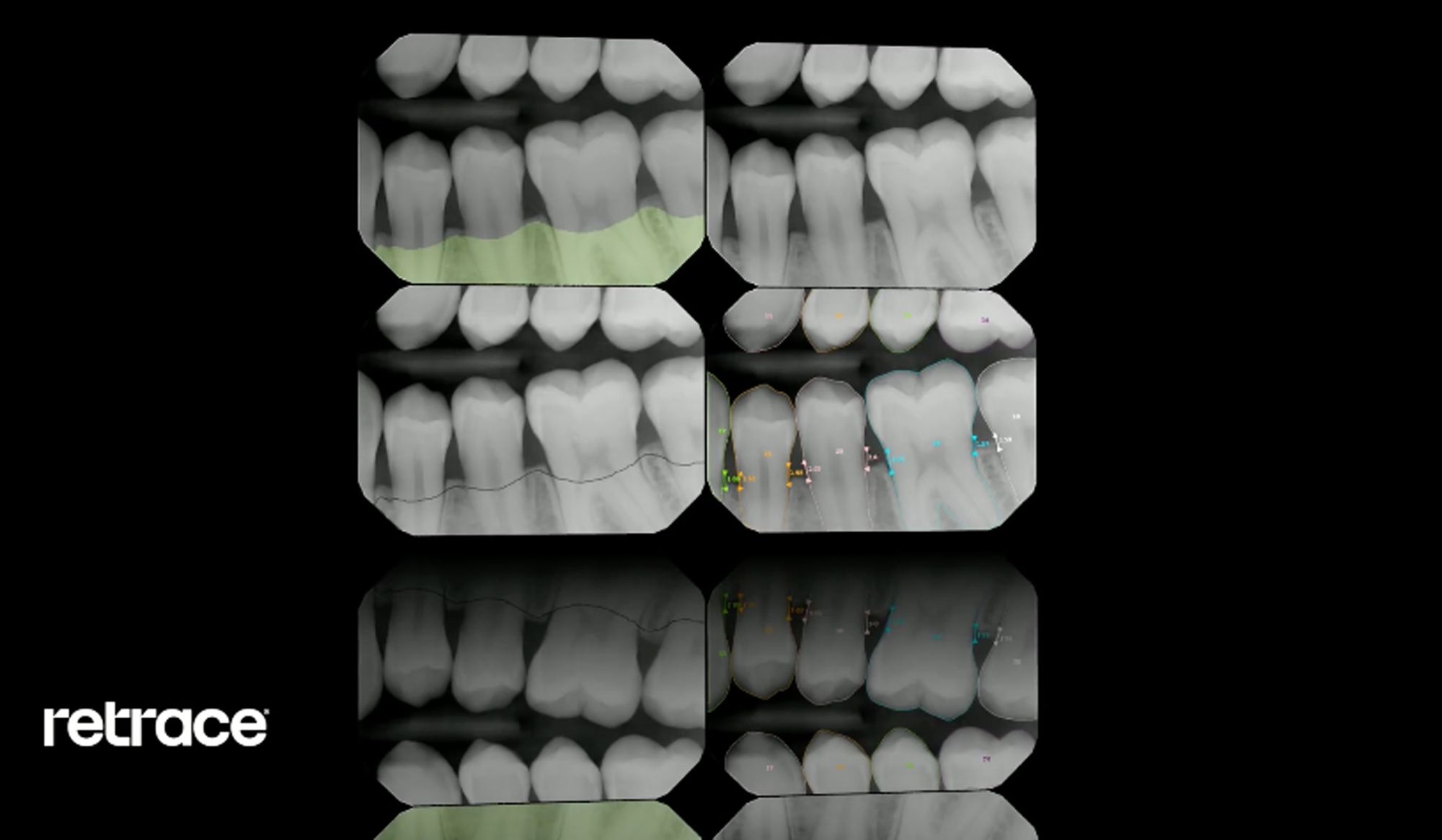Retrace Dives Deep on Deep Fake, Artificial Intelligence in Dentistry Study
This publication from Retrace asserts that “Deep Fake” technology can bolster artificial intelligence when recognizing and diagnosing periodontal disease.
Retrace Dives Deep on Deep Fake, Artificial Intelligence in Dentistry Study

Dental artificial intelligence group Retrace has announced the publication of a new study called “A generative adversarial inpainting network to enhance prediction of periodontal clinical attachment level.” This study examines the use of “Deep Fake” technology for the improvement of diagnostic accuracy of artificial intelligence (AI) algorithms in identifying periodontal disease.
This research aims to demonstrate how larger datasets can help AI make better decisions, according to Founder and CEO of Retrace, Dr Ali Sadat.
“Over the past few years, we have seen a sharp rise in dental and medical imaging AI companies; some who have even received FDA Clearance,” Dr Sadat said in a press release from Retrace. “Looking at the data, most devices were cleared with only a few hundred images from a limited number of imaging sources. As a result, these algorithms have struggled to generalize to the same level of accuracy in a real-world environment compared to the training set used to get clearance. Novel technologies like this [Deep Fake] can help mitigate these deficiencies and improve the generalizability of many diagnostic dental and medical AI solutions.”
With standard dental radiographs, errors can present in image distortions or patient anatomy. The study took a look at 10, 687 radiographs with independent validation from clinicians and researchers, and eventually demonstrated that a generative adversarial network or “Deep Fake,” improved AI accuracy in periodontal disease detection.
Using AI bolstered by Deep Fake technology can improve diagnostics, per the study and CTO at Retrace, Dr Vasant Kearney.
“Clinicians routinely imaging hidden anatomy and unify disjoint medical images in their minds, but AI has historically struggled to cope with image boundaries and discontinuities,” Dr Kearney said in the press release. “Our team is very excited to present an elegant solution that could be used to solve complex claim and healthcare transactions while delivering an enhanced patient and provider experience.”
This study has been published in the August 2022 edition of the Journal of Dentistry.
Product Bites – January 19, 2024
January 19th 2024Product Bites makes sure you don't miss the next innovation for your practice. This week's Product Bites podcast features new launches from Adravision, Formlabs, Owandy Radiology, Henry Schein Orthodontics, Dental Creations, and Dental Blue Box. [5 Minutes]
Product Bites – January 12, 2024
January 12th 2024The weekly new products podcast from Dental Products Report is back. With a quick look at all of the newest dental product launches, Product Bites makes sure you don't miss the next innovation for your practice. This week's Product Bites podcast features new launches from Videa Health and DentalXChange.